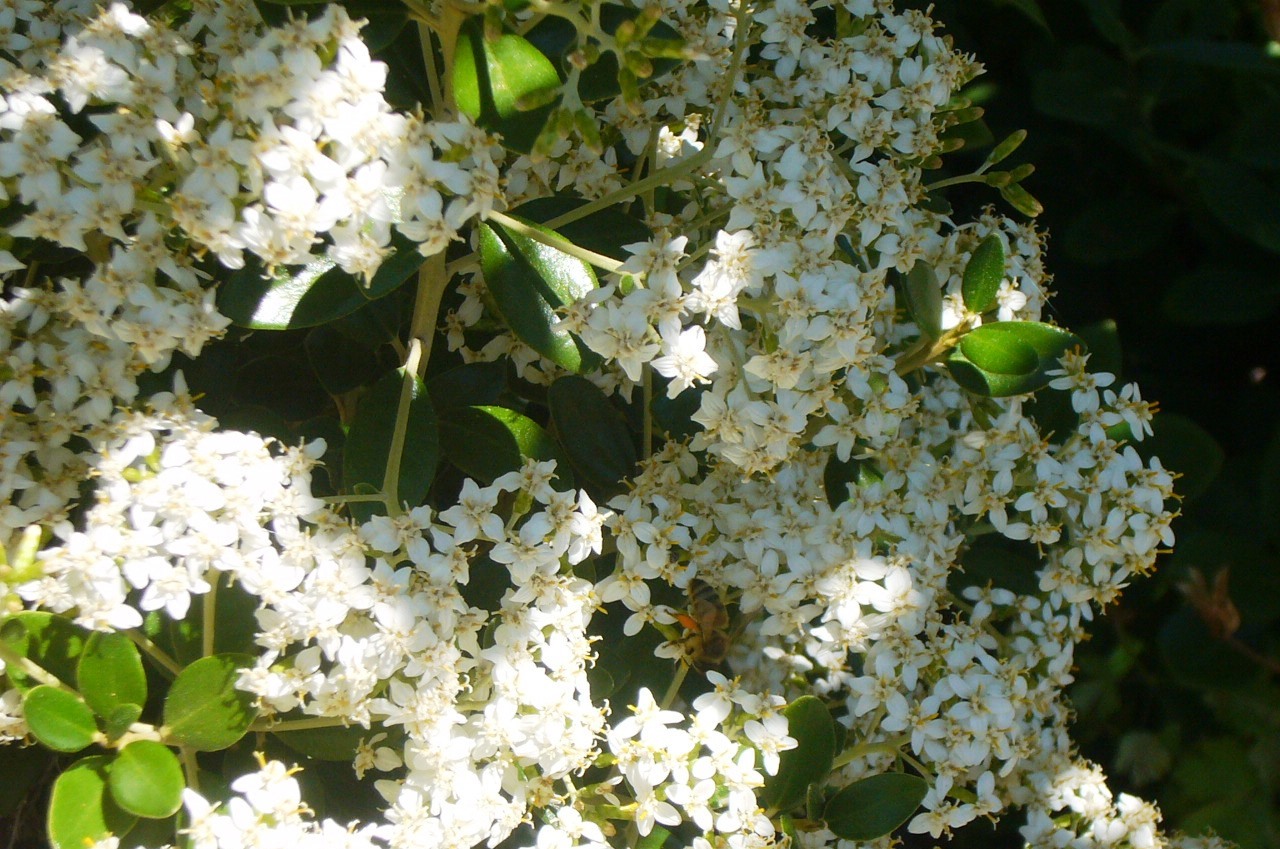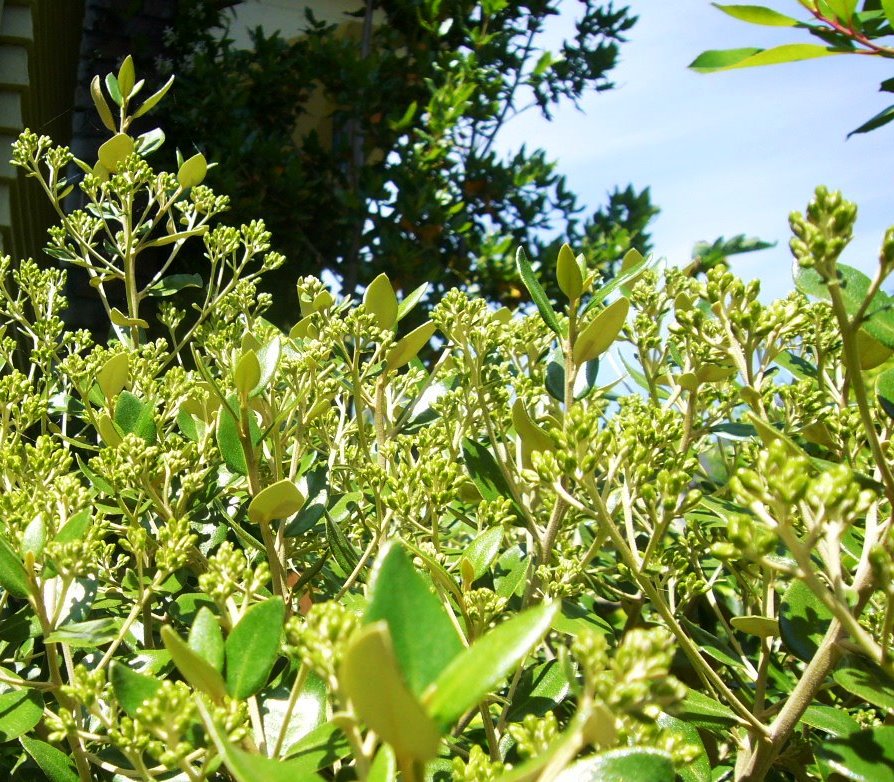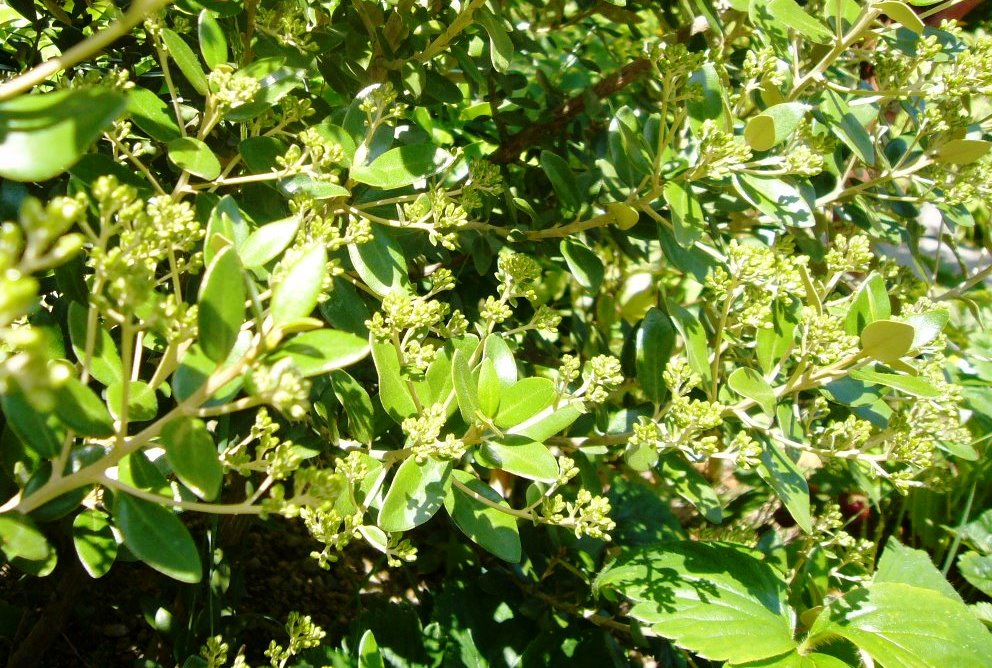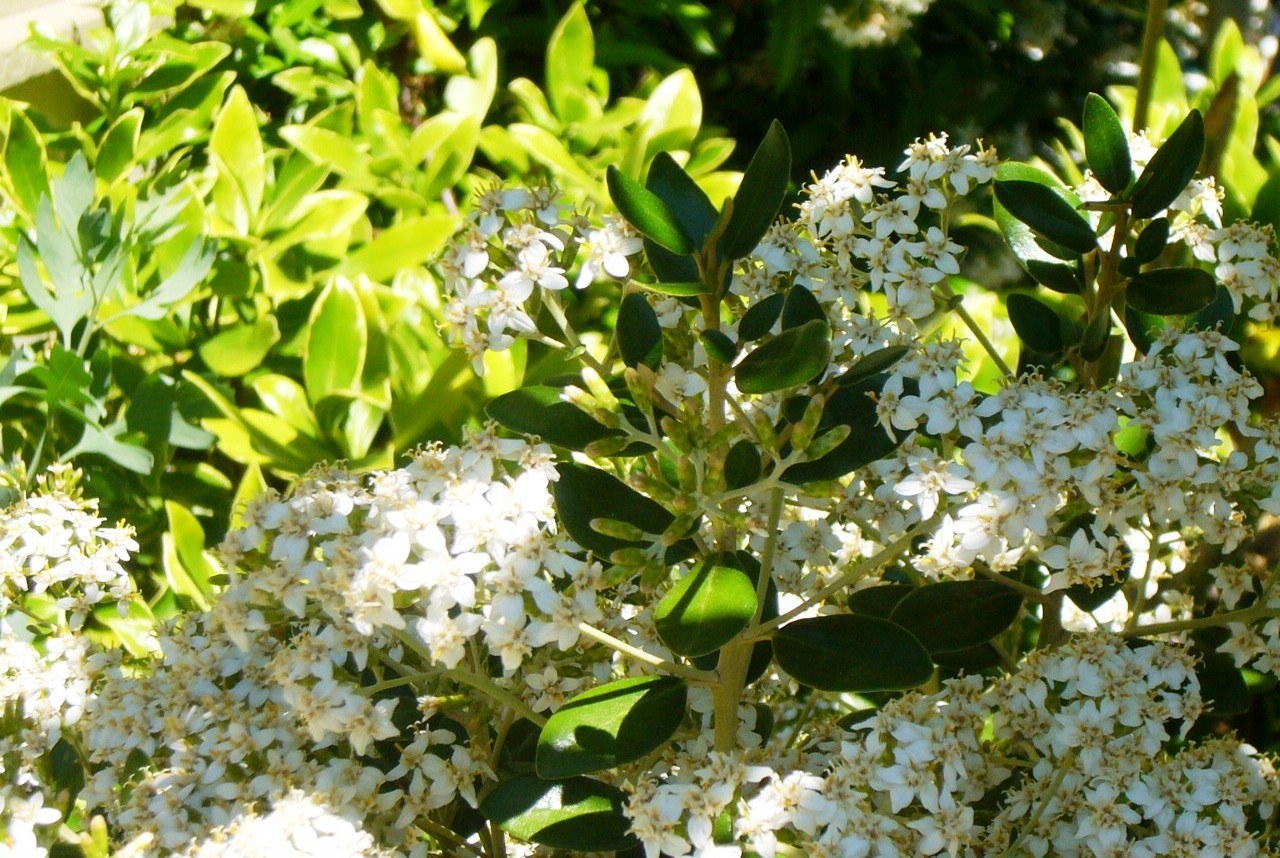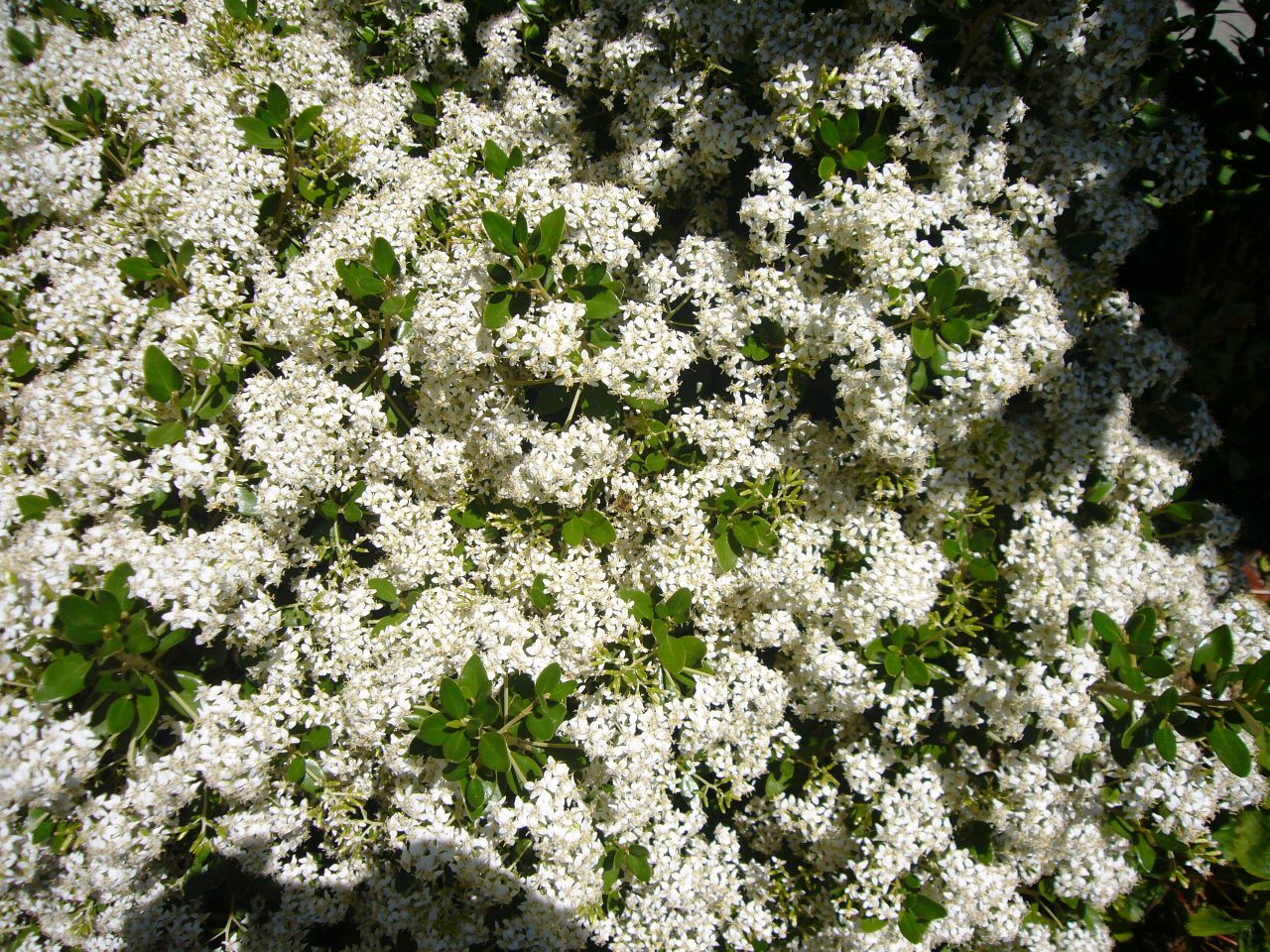Daisy Bush (Olearia x haasti)
I didn’t plan it that way, but due to my love of evergreens and the climate in Seattle, my garden has evolved in a sort of woodland style. I’ll try almost any broad leaf evergreen you can think of. If it flowers in fall or winter, has scented flowers, and attracts birds, bees or butterflies I will find a place for it in my little forest. And that explains how I ended up planting Olearia x haasti or Daisy Bush.
Olearia x haasti (also called New Zealand Daisy Bush) is a evergreen perennial, native to the Haast Pass area in the southern Alps. Its glossy leaves are dark olive green on the top and a khaki brown on the bottom. In my garden it has prospered through all kinds of weather including 18°F degree winter temperatures with snow, and dry summer weather up to 98°F. It’s quite hardy and truly drought tolerant once it’s established. It can get as big as 6 feet high by 9 feet wide.
The buds appear in late May and then the fragrant, tiny, daisy-like flowers open in June.
Daisy Bush keeps its good looks year round, but I think it looks the best without the flowers. The scent and the bees it draws make up for it looking like a big white cloud temporarily.
It does require deadheading or it will be covered in brown flowers that will cover up the beautiful green leaves. Luckily, if you wait for the flowers to dry out, you can remove them in handfuls without damaging the leaves or stems. It doesn’t take long to get it looking good again.
